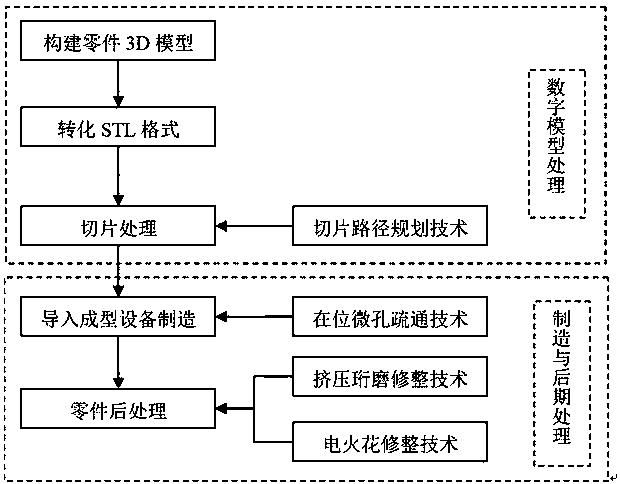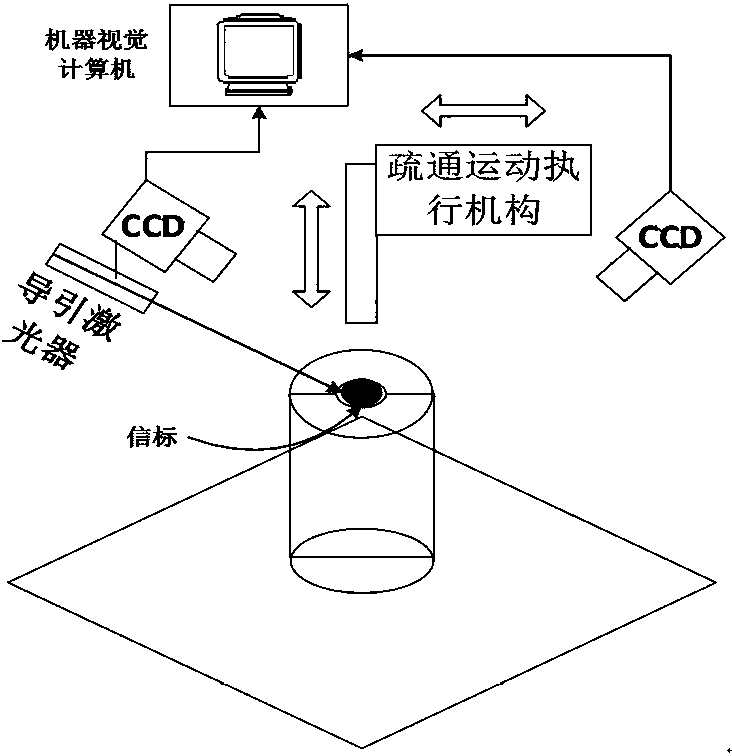Compound processing method of micropore
A composite processing and processing method technology, applied in the direction of instruments, computer control, simulators, etc., can solve the problems of large length, poor rigidity, and slow EDM removal rate, and achieve the effect of improving surface roughness and shape accuracy
- Summary
- Abstract
- Description
- Claims
- Application Information
AI Technical Summary
Problems solved by technology
Method used
Image
Examples
Embodiment 1
[0038] The base material of this embodiment is pure tungsten powder, and it is required to prepare a pure tungsten plate. The pure tungsten plate has a pure tungsten microhole with a diameter less than or equal to 100 μm, a thickness greater than or equal to 20 cm, and a depth-to-diameter ratio greater than or equal to 200.
[0039] The micropore composite processing method of the present embodiment comprises the following steps:
[0040] a. Draw the pore size to be manufactured in the sketch of PRO / E software;
[0041] b. Stretch the micropores in the 2D sketch to form a 3D micropore model;
[0042] c. Set the chord height and angle control of the three-dimensional microporous model, adopt the parameter combination of chord height deviation 0.03, and angle deviation 0.025 to form a part model after the reconstruction of the triangular surface, and save the model as an STL file format;
[0043] d. Import the exported STL format file into the slicing software Autofab, confirm ...
PUM
 Login to View More
Login to View More Abstract
Description
Claims
Application Information
 Login to View More
Login to View More - R&D
- Intellectual Property
- Life Sciences
- Materials
- Tech Scout
- Unparalleled Data Quality
- Higher Quality Content
- 60% Fewer Hallucinations
Browse by: Latest US Patents, China's latest patents, Technical Efficacy Thesaurus, Application Domain, Technology Topic, Popular Technical Reports.
© 2025 PatSnap. All rights reserved.Legal|Privacy policy|Modern Slavery Act Transparency Statement|Sitemap|About US| Contact US: help@patsnap.com


